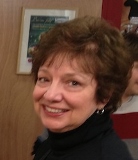|

Angela Thevenot
|
|

Teresa Dalle
|
Cultural Competency
Although not all teachers become English as a Second Language
(ESL) teachers, many will work with English language learners (ELLs) at
some point in their careers, and a knowledge of culture and its effect
on education remains an important goal for teachers-in-training,
particularly given the large numbers of ELLs in schools. After all,
nearly one in five school-age students in the United States comes from a
home where a language other than English is spoken, and the majority of
American classrooms consist of students from several different racial,
ethnic, cultural, and linguistic backgrounds (Thevenot, 2012).
Cultural competence, which Martin and Vaugn (2007) define as an
ability to interact effectively with people of different cultures, is
generally considered to be a developmental process that evolves over an
extended period. Yet for many teachers-in-training, a one-semester ESL
methods course may be their only opportunity for exposure to cultural
issues. Course designers have responded to this by integrating cultural
components into their ESL methods courses; they realize that teachers
who lack opportunities to develop cultural awareness will eventually
find themselves unprepared for the dynamics of multicultural classrooms.
Incorporating Cultural Awareness
The question remains, however, whether integrating modules on
culture in a one-semester class can really make a difference with
preservice teachers and lead them to a deeper understanding of the
notion of culture and its influence on learning. If so, what types of
activities seem to be the most effective? After experimenting with
various means of introducing preservice teachers to cultural issues,
Thevenot (2012) found changes in perception and attitude among her
students in an ESL methods course, especially an increased global
perspective. In this 2012 study, Developing Cultural Awareness:
a Qualitative Case Study of Pre-service Teachers' Experiences in an
Introductory Course in ESL Methods and Technique, Thevenot
outlines various pedagogical strategies used in an ESL methods class
that resulted in student change in cultural perspectives.
The one-semester class, an ESL methods course offered at the
University of Memphis, was revised to incorporate selected
nontraditional, culture-specific texts and ELL experiential field study
projects. Pedagogical strategies included focused, reflective discussion
board questions to explore the immigrant’s voice, field research to
investigate the views and perceptions of ELLs, and discussion and
analysis of Steves’ (2009) book, Travel as a Political
Act, to introduce global perspectives. A more detailed look at
each of the activities and at student reactions to them demonstrates
some change in attitude of the trainees and at least some movement
toward more cultural awareness.
The students were first asked to respond to an essay by Tan
(1990), “Mother Tongue,” which tells of her life as a Generation 1.5
English speaker. The students participated in an online discussion board
activity after reading the essay and reacting to the voice of an ELL.
Common observations of the participants were categorized into subtopics
that arose in this assignment and that related to the students’ study of
ESL issues. For this first reading, for example, those subtopics
included the notion of Generation 1.5, surface culture vs. deep culture,
language and identity, code switching, avoidance, foreign talk, Basic Interpersonal Communicative Skills (BICS)/Cognitive Academic Language Proficiency (CALP), social distance, and the ELL perspective. Although some
responses to this early assignment demonstrated an awareness of the
ELL’s perspective, others represented the tendency for monolingual
preservice teachers to negate the importance of the heritage language.
The variance in the responses signaled a wide range of preexisting
intuitive second language acquisition knowledge on the part of the
participants at the beginning of their study.
The second activity was the ELL interview project, designed to
provide preservice teachers a chance for cross-cultural communication
with nonnative speakers of English. For many, this was a first-time
opportunity. Each student interviewed two ELLs, and the interviews took
place 4 to 5 weeks into the 14-week course. The interview results that
related to this activity included the notions of stereotyping, social
interaction, language interference, critical period, the English only
debate, and intrinsic and extrinsic motivation. Student attempts to
apply terminology learned in class were sometimes appropriate but other
times showed a disconnect between meaning and application. One student
wrote, for example, “They both were on the same level of schema of
English.” The benefit, though, was the opportunity for authentic
cross-cultural communication.
An innovative part of the class was the use of Steves’ (2009)
book, Travel as a Political Act, which is certainly
not a traditional textbook but one that challenged the preservice
teachers to broaden their perspectives. Assigned questions challenged
them to think globally but process locally—or personally. Early in the
course, the introduction and first chapter were introduced. Those first
parts of the text cover multicultural perspectives and present an
overview that is subjective in nature. Later in the semester, the
students chose chapters that were culture-specific and required
participants to objectively confront positions and feelings. Those
chapters included “Europe Unites: Successes and Struggles,”
“Resurrection in El Salvador,” and “Turkey and Morocco: Sampling Secular
Islam.”
The categories arising from the first assignment with the text,
evident through their discussions and writing, included such themes as
cultural cognition, deep culture, acculturation in the classroom,
teaching as a political act, cross-cultural approaches, policy and
planning, fear and complacency, confusion, and motivation. In the second
assignment with the text, the one with the specific cultural
information, student comments revealed a focus on presuppositions,
multilingualism, the role of history, gender roles, voices, and
comparative religion, among other cultural notions. For many students,
the text offered an alternative way for readers to “visit” other
countries and cultures through “armchair travel.” Students found value
in this and discussed possibilities for cross-cultural communication
through technology.
Effect of Incorporating Activities
Did preservice teachers perceive their experiences as
influencing their global perceptions? It was possible to see changes in
awareness from a top-down perspective beginning with the first reading.
Deep cultural issues began to bleed through as participants discussed
“Mother Tongue” (Tan, 1990). Early on, participants made a connection
between surface and deep culture. They then expanded this knowledge and
applied it to the academic environment. As students interviewed ELLs,
there was a shift in focus, or role reversal, from being the American
observer to the American being observed. This reality shift came about
not as the result of travel or immersion but through social interaction
with nonnative speakers in the United States.
After reading Steves’ (2009) book, the preservice teachers
turned the discussion to cross-cultural classrooms, indicating an
increasing awareness of how they are culturally different from many of
their international students. In response to the global overview that is
the introduction and chapter one of the book, the students questioned
their feelings about policy and planning, and the social and political
roles played by the United States around the world. Finally, many
participants manifested cultural disengagement as they encountered more
country-specific differences. Many preservice teachers began to struggle
with American positions, in general, and their own principles and
values, in particular. These general illustrations suggest that they, in
fact, do perceive their experiences as making them more aware of their
own cultural background.
Perhaps a more important question is: “Did preservice
teachers perceive their experiences as influencing their future teaching
in a class with ESL students?” Here the data showed that there appeared
to be a progression of awareness of the importance and significance
that cross-cultural experiences bring to the classroom. Initial
comments, especially in the first reading, are general and refer to
language acquisition and academic culture. As the class progressed,
however, and especially through the interviews, preservice teachers
recognized the uniqueness of each ELL. As the preservice teachers moved
through the course, they began to see their future classrooms as
classrooms for all students, including the ELLs. In turn, they began to
focus on maximizing the classroom environment and developing methods
that would address the particular cultural and linguistic needs of ELLs.
The conversations with nonnative speakers also afforded the
participants the opportunity to understand an ESL classroom from the
ELL’s perspective. In reading Travel as a Political
Act (Steves, 2009), participants recognized their own
perspectives as teachers and addressed teacher acculturation in the ESL
classroom.
Most preservice teachers anticipated an ESL honeymoon
experience; however, some were quick to point out the reality of
adjusting to a multicultural teaching environment and the need to
prepare for ESL classroom acculturation. The majority of American
classrooms consist of students from several different racial, ethnic,
cultural, and linguistic backgrounds. These multicultural classrooms are
real-time archetypes of a “shrinking world.” As preservice teachers
began to understand this truth, they began to assess alternative
approaches to teaching.
REFERENCES
Martin, M., & Vaugn, B. (2007). Cultural competence: The nuts and bolts of diversity and inclusion. Strategic Diversity &
Inclusion Management 1(1), 31–38. Retrieved from http://dtui.com/Magazine/MagArticles/March2007pub/cultural_competence.doc
Steves, R. (2009). Travel as a political act. New York, NY: Nation.
Tan, A. (1990, Fall). Mother tongue. The Threepenny
Review, 11(3), 7-8.
Thevenot, A. (2012). Developing cultural awareness: A
qualitative case study of pre-service teachers’ experiences in an
introductory course in ESL methods and techniques (Doctoral
dissertation). University of Memphis, Memphis, TN.
Angela B. Thevenot teaches ESL at the University of Memphis. She
has taught English as a Foreign Language in the Czech Republic and
Mexico. She also conducts local pop-up schools providing inservice
teachers with ESL training and tools for bridging English learners to
the Common Core State Standards.
Teresa Dalle is an associate professor of ESL/linguistics in the
English Department at the University of Memphis. She has worked in ESL
teacher training for more than 30 years, has codirected federal grants
on teacher training, and has presented and published on a variety of
topics related to ESL/TESL. |

